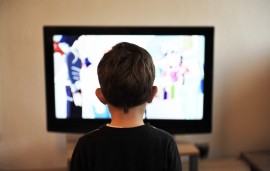Get analysis, insight & opinions from the world's top marketers.
Sign up to our newsletter.
RAC’s vision is to provide global leadership by championing good practices in marketing communications to children. This exercise is shaped by a continuous dialogue and engagement with policy-makers, society and parents.
RAC keeps members up to speed with latest developments, engages with policymakers and other stakeholders on priority issues, identifies emerging trends and concerns, draws up potential industry and company solutions, monitors member activities helping them steer clear of potential problems and drives “beyond compliance” programmes which help to future-proof companies’ ability to connect with younger consumers.
There are no meetings published at the moment. Please check back later!
Since 1996, the Responsible Advertising and Children Programme (RAC) has brought together advertisers, agencies and the media at an international and European level to anticipate and understand societal and parental aspirations regarding responsible marketing communications and children. RAC brings together almost a thousand people globally with an interest and stake in the issue of marketing and children. The network is almost 400 strong in Europe, over 150 of whom come to our quarterly meetings in Brussels every year to address the issues of highest priority to brand owners.
RAC’s vision is to provide global leadership by championing good practices in marketing communications to children. This exercise is shaped by a continuous dialogue and engagement with policy-makers, society and parents.
RAC keeps members up to speed with latest developments, engages with policy-makers and other stakeholders on priority issues, identifies emerging trends and concerns, draws up potential industry and company solutions, monitors member activities helping them steer clear of potential problems and drives “beyond compliance” programmes which help to future-proof companies’ ability to connect with younger consumers.

How can advertisers help shape a healthier global food environment?
Practical guidance on how to evolve advertising self-regulation and preserve the private sector’s license to operate

An overview of the Responsible Advertising and Children (RAC) programme meeting held online on 26 February 2025.

WFA’s key messages advocating for proportionate, evidence-based and robust policies on food marketing and children.

Meeting overview and presentations from WFA’s Responsible Advertising and Children (RAC) meeting on 27 November 2024.

Meeting overview and presentations from WFA’s Responsible Advertising and Children (RAC) meeting on 25 September 2024
